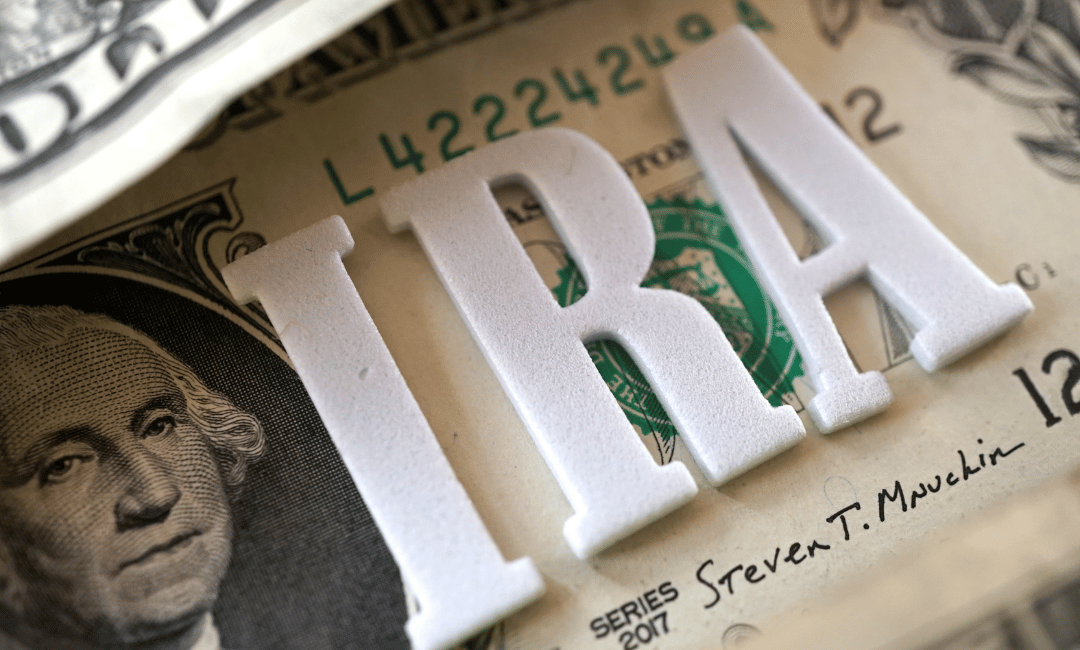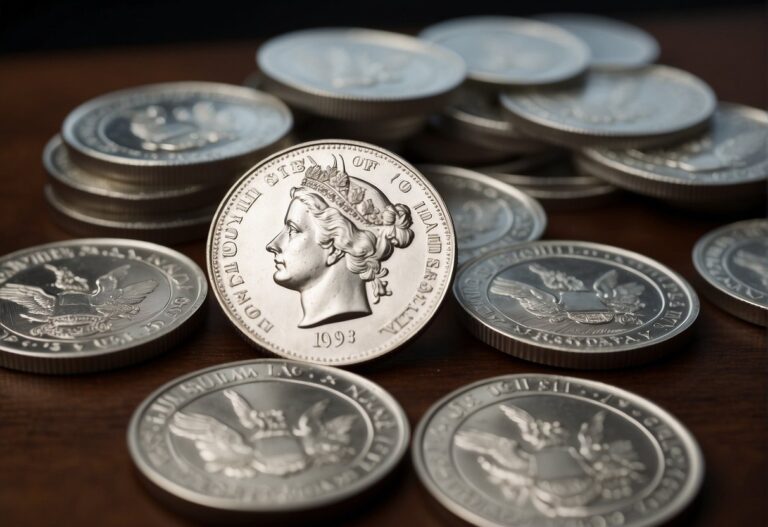Smart Money Verified’s free gold roll over guide helps educate investors about the ever-changing nature of the economy and the market’s volatility; many investors seek stability and a hedge against inflation in their retirement planning. Gold IRAs have become a popular vehicle for diversifying retirement portfolios, allowing individuals to invest in physical precious metals like gold, silver, platinum, and palladium within a self-directed Individual Retirement Account (IRA).
A Gold IRA rollover is a process through which investors can transfer assets from traditional or Roth IRAs or a 401(k) or other retirement plan under certain conditions into a gold investment.

Gold IRAs are subject to specific IRS regulations and involve a detailed rollover process to ensure compliance. The process typically includes choosing a reputable custodian, selecting a precious metals dealer, and deciding on storing the physical assets.
The tangible nature of a gold and silver IRA provides some investors a sense of security, making it an appealing component of a diversified investment strategy. Making an informed decision when conducting a Gold IRA rollover is crucial for the potential long-term preservation of wealth and preparing for a stable retirement.
Key Takeaways
- A Gold IRA rollover allows the inclusion of precious metals in a retirement portfolio, offering diversification.
- The rollover process must align with IRS rules to maintain the account’s tax-deferred or tax-free status.
- Choosing the proper custodian and understanding the financial implications are critical for successful Gold IRA management.
Understanding Gold IRAs

Investing in a Gold IRA allows individuals to diversify their retirement portfolio by including physical precious metals. This financial strategy can enhance an investor’s portfolio with assets that traditionally maintain value over time.
What is a Gold IRA?
A Gold IRA is a type of Self-Directed IRA that permits the inclusion of Physical Gold and other approved Precious Metals as part of a retirement investment portfolio. Unlike traditional IRAs that typically hold stocks, bonds, and mutual funds, a Gold IRA enables investors to hold tangible commodities. The Internal Revenue Service (IRS) has specific guidelines on what gold and precious metals are allowed in a Gold IRA, including purity and form requirements.
Benefits of a Gold IRA
The main benefits of investing in a Gold IRA include:
- Diversification: A Gold IRA can protect against inflation and market volatility, reducing the risk in a portfolio.
- Potential Growth: Over time, gold has been shown to grow in value, potentially providing a possible hedge against economic downturns.
- Control: Investors directly control their investment choice within a Self-Directed IRA.
- Tax Advantages: Similar to traditional IRAs, Gold IRAs offer tax-deferred or tax-free growth, depending on the type of IRA.
Investors considering a Gold IRA should consult financial advisors and understand IRS regulations to ensure compliance and maximize retirement benefits.
Gold IRA Rollover Process

A Gold IRA Rollover allows individuals to transfer value from a traditional retirement account into gold assets. This section provides a clear roadmap for those interested in diversifying their retirement portfolios with gold investments.
Steps to Roll Over Your Existing Retirement Account
- Determine Eligibility: The first step is to ensure that your current retirement account is eligible for a rollover. Standard accounts include 401(k), Roth IRA, and SEP IRA.
- Choose Gold Investments: Decide on the form of gold you wish to hold in your IRA, such as coins or bullion bars.
- Open a Gold IRA Account: Find reputable IRA custodians specializing in precious metals.
- Initiate a Transfer Request: Submit the required paperwork to your current custodian to facilitate the transfer.
- Execute the Rollover: Once the paperwork is processed and the transfer is complete, the funds will be moved to your Gold IRA.
Choosing the Right Custodian
- Research Reputable Firms: Investigate potential IRA custodians specializing in gold investments and compare their fees, services, and customer reviews.
- Understand Custodian Responsibilities: A custodian will handle your gold assets’ storage, security, and reporting. They play a crucial role in the compliance and administration of your Gold IRA.
The custodian needs to comply with IRS regulations regarding gold IRAs to maintain the tax-advantaged status of the account. Investors should also be mindful of the difference between direct transfers and indirect rollovers, as the latter may have tax implications and deadlines that need to be strictly adhered to.
Investment Choices and Diversification

When considering a Gold IRA rollover, understanding the available investment choices and the importance of diversification is essential. These factors are crucial for maintaining a well-balanced retirement portfolio.
Types of Gold Investments
In a Gold IRA, investors have several options. They can choose gold coins recognized by their purity and weight. Alternatively, they can invest in bullion bars in various sizes, ranging from a single gram to 400 ounces. These tangible assets must meet the fineness standards set by the IRS.
- Gold Coins: Typically minted by government mints, carrying a legal tender value.
- Bullion Bars: Larger and often preferred for their lower premiums over the spot price of gold.
Diversifying Your Portfolio
Diversification is a strategy to spread risk across various types of investments. Investors can mitigate market volatility by including gold coins and bullion bars in an investment portfolio. Tangible assets, like gold and silver coins and bars, can offer stability during times of economic uncertainty.
- Diversify: To include gold alongside stocks, bonds, and other assets.
- Investment Portfolio: A well-diversified portfolio can help protect wealth against inflation and downturns in the stock market.
IRS Regulations and Compliance

When considering a Gold IRA rollover, it is paramount that one understands the relevant IRS regulations and complies with them to avoid potential tax penalties. Investors should be especially mindful of the tax implications and storage requirements mandated by the IRS.
Tax Implications
The IRS stipulates strict guidelines on distribution and taxation of Gold IRA investments. When assets in a traditional IRA are rolled over to a Gold IRA, the event is typically tax-free as long as IRS rules are adhered to. However, non-compliance can result in the account being considered distributed, with taxes and penalties due.
The rollover must be completed within an IRS-defined 60-day period to maintain the favorable tax status. Otherwise, the amount becomes taxable income, and if the individual is under 59 1/2 years old, a 10% early withdrawal penalty may apply.
IRS-Approved Storage Requirements
Gold IRAs are subject to stringent IRS-approved storage requirements. The IRS does not allow investors to store their Gold IRA assets personally; instead, these assets must be held in an IRS-approved depository. The choice of storage will incur varying storage fees depending on the security and services the depository provides. Failure to store gold in an approved facility can lead to the precious metals being considered distributed, with corresponding tax consequences. Investors must ensure they’re using a depository that meets all the compliance standards set forth by the IRS to maintain their IRA’s tax-advantaged status.
Financial Considerations

When delving into a Gold IRA Rollover, investors must be aware that financial considerations such as understanding the various costs involved and assessing the risks and returns are crucial to making an informed decision. Factors like inflation, market volatility, and economic uncertainty impact these considerations.
Understanding the Costs
Investors should pay attention to the fees associated with a Gold IRA rollover. These may include setup fees, storage fees for physical gold, and potential selling commissions. Selecting a gold IRA custodian with a transparent fee structure is essential to avoid unexpected charges. Additionally, the costs can vary depending on whether the gold investment is in coins, bars, or bullion, with each having different storage and insurance requirements.
- Setup Fees: Ranging from $50 to $150, these are one-time fees for opening your Gold IRA.
- Annual Storage Fees: Typically between 0.5% and 2% of your account value, depending on your custodian.
- Selling Commissions: Can be up to 3% when liquidating your gold investments.
Assessing Risks and Returns
A Gold IRA is often considered a hedge against inflation, as the value of gold typically increases when the cost of living rises. However, investors should maintain a balanced view by understanding that gold prices can be volatile in the short term. They should weigh this volatility against their risk tolerance and the potential for gold to provide stability during economic uncertainty.
The decision to invest in a Gold IRA should align with an investor’s long-term retirement strategy and not be based solely on the current economic environment. One may not expect the same returns as the stock market, but the peace of mind that comes with owning a tangible asset like gold may make it a worthwhile component of a diversified retirement portfolio.
Gold IRA Transfer Versus Rollover

Investing in a gold IRA can be a strategic way to diversify one’s portfolio, but it’s vital to understand the differences between a Gold IRA transfer and a rollover. Each method has specific tax implications and rules.
Direct Versus Indirect Rollover
Direct Rollover:
In a direct rollover, funds are moved directly from one retirement account, such as a 401(k), 403(b), or governmental 457(b), into a Gold IRA without the account holder taking possession of the funds. This transfer occurs between the respective financial institutions and is not subject to taxation or early withdrawal penalties because the money is not distributed to the individual.
Indirect Rollover:
Conversely, with an indirect rollover, the individual receives a check for the distribution from their existing retirement account, which may be a Traditional IRA, Roth IRA, or employer-sponsored plan. They then have 60 days to deposit these funds into the new Gold IRA account. If they fail to do so within this window, it could be considered a taxable distribution, potentially incurring early withdrawal penalties if they are under 59 ½ years old.
401(k) To Gold IRA Rollover Process
The 401(k) to Gold IRA rollover process involves several key steps. One must first decide if the rollover will be done directly or indirectly. Given the potential tax complications, most investors prefer the simplicity of a direct transfer. During this process, the individual must:
- Establish a Gold IRA with a suitable custodian specializing in precious metals.
- Coordinate with their 401(k) plan administrator to facilitate a direct transfer of funds to the new Gold IRA account.
Once the transfer is complete, the account holder can select specific gold investment options, such as coins or bullion, adhering to the IRS’s regulations on precious metals IRAs.
Managing Your Gold IRA
When managing your Gold IRA, it’s crucial to understand contribution boundaries and tax implications. Investors must routinely monitor their holdings to ensure their retirement strategy aligns with their financial goals.

Contribution Limits and RMDs
For Gold IRAs, the annual contribution limits align with traditional IRA accounts. As of the current year, investors can contribute up to $6,000 annually or $7,000 if they are 50 or older. These contributions help in bolstering the retirement plan with precious metals. Required Minimum Distributions (RMDs) are also critical to a Gold IRA. Upon reaching 72, investors must begin taking RMDs, which are calculated based on the account balance and the investor’s life expectancy.
Keeping Track of Your Investment
Regularly monitoring a Gold IRA ensures the investment is performing in line with expectations. Retirement accounts require careful tracking, not just for performance but also for ensuring compliance with IRS rules and regulations. An investor should:
- Review monthly statements
- Check annual performance against gold market trends
- Understand fees associated with account maintenance and storage
Investors must work with a reputable custodian familiar with the specifics of Gold IRAs to ensure accurate record-keeping and compliance.
Choosing a Reputable Gold IRA Company

When considering the move to a Gold Individual Retirement Account (IRA), selecting a trustworthy company is crucial. Investors should look for a reputable Gold IRA company with a solid track record.
The firm should provide transparent information about setup fees, annual administrative fees, and storage costs associated with investing in precious metals.
A reputable company often has numerous positive reviews and high ratings from trusted sources. Verifying their credibility on financial authority websites and checking for membership in organizations like the Business Consumer Alliance or Trustlink is crucial, reflecting their industry reputation.
Before finalizing the decision, consult a financial advisor who understands the intricacies of investing in precious metals. They can offer personalized advice based on your financial needs and long-term retirement goals.
Confirm whether the company provides educational resources and if they adopt a consultative approach rather than aggressively pushing for a sale.
Here is a quick checklist when choosing a company:
- Customer Service: Responsive, knowledgeable support.
- Credibility: Membership with industry watchdogs.
- Experience: How long they’ve been in business.
- Policies: Clear, fair fee structure and policies.
- Education: Resources to help you make informed decisions.
Ultimately, these steps will ensure you find a Gold IRA company you can rely on to manage your retirement savings in gold and other precious metals.
Preparing for Retirement

As individuals approach retirement age, it’s crucial to have a well-thought-out investment strategy to secure a stable financial future. A diversified retirement portfolio and sound retirement savings accounts are fundamental to achieving their retirement goals.
Setting Retirement Goals
One begins by assessing their expected retirement age and the lifestyle they envision. These factors directly influence how much they need to save. It’s advisable to consider various retirement savings accounts like 401(k)s, traditional IRAs, and Roth IRAs, each with different tax implications and growth potentials. Establishing clear retirement goals helps tailor an investment strategy aligning with their long-term aspirations and risk tolerance.
Including Gold in Your Long-Term Strategy
Incorporating gold into a retirement portfolio can serve as a store of value and a hedge against inflation. Gold has historically maintained its worth over time, making it a strategic choice for those looking to preserve their purchasing power in retirement. Initiating a Gold IRA rollover involves moving funds from existing retirement savings accounts into a self-directed IRA that holds physical gold. It’s a way to diversify one’s retirement portfolio to reduce risk and potentially improve financial outcomes in one’s golden years.
Frequently Asked Questions

This section addresses common inquiries investors may have about the process and implications of transferring from a traditional IRA to a gold IRA, ensuring that investors are informed about the details and considerations of such a financial move.
How does one initiate a transfer from a traditional IRA to a gold IRA?
To initiate a transfer, an investor must choose a gold IRA custodian and complete the required paperwork to start the rollover process from a traditional IRA to a self-directed gold IRA.
What are the potential risks associated with investing in a gold IRA?
Investing in a gold IRA can come with risks such as market volatility, potential costs and fees associated with the setup and storage of physical gold, and the possibility of a less diversified retirement portfolio.
Is converting a traditional IRA to a gold IRA a prudent financial strategy?
Converting to a gold IRA could be a strategic move for individuals seeking to diversify their retirement portfolio and hedge against inflation. However, it should align with the investor’s overall retirement planning objectives.
What are the tax implications of rolling over an IRA into gold investments?
A gold IRA rollover can be conducted without incurring immediate taxes if completed within IRS guidelines, but investors should consult with a financial advisor to understand any future tax liabilities.
Which precious metals are eligible for inclusion in a gold IRA?
Eligible precious metals for a gold IRA typically include gold, silver, platinum, and palladium, which must meet IRS fineness standards and be held by an IRA trustee.
What are the best practices for selecting a gold IRA custodian?
Investors should look for a reputable and trustworthy custodian with transparent fee structures, excellent customer service, and a proven track record in administering gold IRA accounts.



